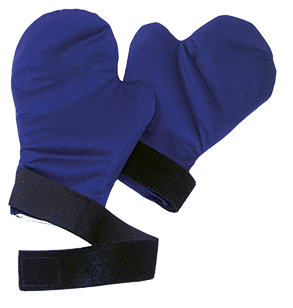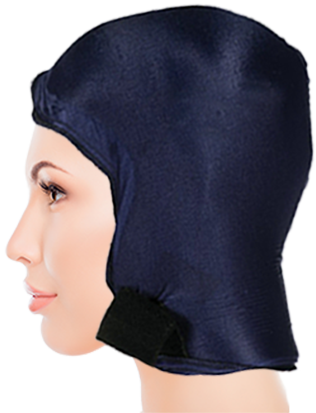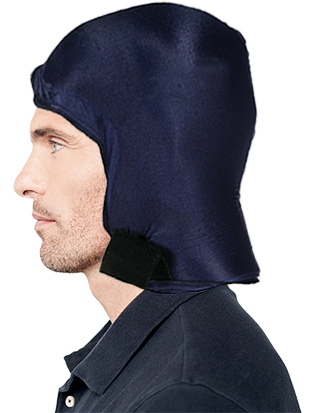CLINICAL STUDIES

Prevention of Chemotherapy-Induced Hair Loss By Scalp Cooling
E. G. Grevelman1 and W. P. M. Breed2*
University of Maastricht, Nassaulaan 11a, 6224 JT Maastricht; 2Department of Internal Medicine, Catharina Hospital, Eindhoven, The Netherlands Received 22 June 2004; accepted 26 October 2004
Background
Chemotherapy-induced temporary hair loss is one of the most common and distressing side-effects of cancer therapy. Scalp cooling to reduce this hair loss is a controversial issue for many doctors and nurses. This may be due to inadequate knowledge.
Keywords
Aalopecia, chemotherapy-induced hair loss, cold cap, hair preservation, hypothermia, scalp cooling Introduction Chemotherapy-induced temporary hair loss is one of the most common and emotionally distressing side-effects of cancer therapy [1-3]. Since about 1970, many preventive measures have been tried to reduce chemotherapy-induced alopecia: the tourniquet [4], medicaments [5] and scalp cooling. Currently, preventive measures mainly focus on scalp cooling. This is done either by procedures in which the cooling agent (ice cap, or gel cap) must be changed several times or by continuous cooling of the scalp with cold air or cold liquid.
There are two scientific rationales for scalp cooling. The first is vasoconstriction, which reduces the blood flow to the hair follicles during peak plasma concentrations of the chemotherapeutic agents and so reduces cellular uptake of these agents. This was demonstrated by Bu¨low et al. [6]. The second rationale is reduced biochemical activity, which makes hair follicles less susceptible to the damage of chemotherapeutic agents. The latter may be more important than vasoconstriction [6]. A lower glucose/lactate was demonstrated in a hypothermic scalp than in the normothermic scalp [7]. This review of literature will focus on the following areas: the efficacy of the treatment, side-effects, possible disadvantages and the controversies in these areas.
Methods
This review from 53 publications and three personal communications focuses on the efficacy of the treatment, side-effects, possible disadvantages and the controversies in these areas.
Results
Scalp cooling has become an increasingly effective method to prevent hair loss, especially when anthracyclines or taxanes are used. Unfortunately, many studies were small and badly designed and are therefore difficult to compare. There is a considerable variation in the success rates in the various studies. This remains unexplained, but the cooling time, the chemotherapy used and the temperature seem to be influential. Scalp cooling should not be used if chemotherapy is given with a curative intent in patients with generalized haematogenic metastases. The majority of patients tolerate cooling very well.
Conclusion
Scalp cooling is effective but not for all chemotherapy patients. Further psychological, clinical and biophysical research is needed to determine exact indications for cooling and to improve the effect, tolerance, side-effects and the cooling procedure. Multi-center trials should be carried out to gather this information.




